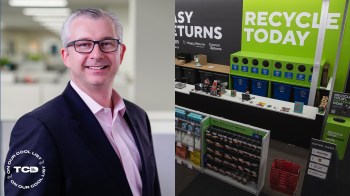An expert is predicting that affordable, clean solar power will continue to become increasingly accessible thanks to "significant" developments in photovoltaic technology.
Renate Egan, a professor at Sydney's University of New South Wales, told PV Magazine that she expects solar windows, flexible film, and solar paint to aid Australia's goals of transitioning to 82% renewable energy for its grid by 2030 and net-zero planet-warming carbon pollution by 2050 (reducing pollution vigorously and then compensating for any that remains).
"It's important to communicate how quickly the solar industry is growing because we are going to see so much change in the next 20 years," said Egan, who is the executive director for the Australian Centre for Advanced Photovoltaics.
Making the switch to solar energy is already one of the best ways for people to save money on their home electric bills and eliminate health-harming pollution from dirty fuels.
The task doesn't have to be daunting, either. SaveOnEnergy's free tool empowers people to explore and compare rates from different providers. Apartment dwellers can participate and reap these benefits, too, by discovering options for community solar.
However, Egan believes that new technologies will help the industry grow and could lead to skyscrapers with solar glass panels that generate all of the buildings' electricity. This is also significant because Egan expects more than half of Australia's clean grid to depend on solar.
"By 2050, we will be looking at 100% renewables," she asserted to PV Magazine. "And we would expect over 50% of that to come from solar, but our electricity needs are also going to grow because we need to electrify everything."
Solar windows are already being manufactured in the United States and Europe, as Egan noted to the outlet. While they are less efficient than traditional photovoltaic panels, which also convert sunlight into energy, their potential has some scientists buzzing.
In 2017, for example, Michigan State researchers announced they had developed a "transparent luminescent solar concentrator" for windows that they estimated could eventually supply as much as 40% of energy demand in the U.S.
Egan also discussed flexible PV films during a guest appearance on UNSW's Engineering the Future podcast series, as reported by PV Magazine.
"At the CSIRO in Melbourne and a group in the University of Newcastle, we are actually now producing a thin film roll-to-roll printing process, that's a bit like the way bank notes are printed," she said, adding that solar paint may translate well to the flexible panels.
While solar paint may sound too good to be true, there have indeed been multiple breakthroughs with the concept, perhaps providing a roadmap to even cheaper clean power.
Egan also pointed to the promise of tandem solar cells — another technological development that could make solar panels even more efficient.
"There are gaps in sunlight that silicon can't access, so we want to add another cell on top that will absorb the light that the silicon is missing," she explained on the podcast, further highlighting how the trajectory of solar technology has the world poised for a brighter and cleaner tomorrow.
Join our free newsletter for cool news and actionable info that makes it easy to help yourself while helping the planet.









